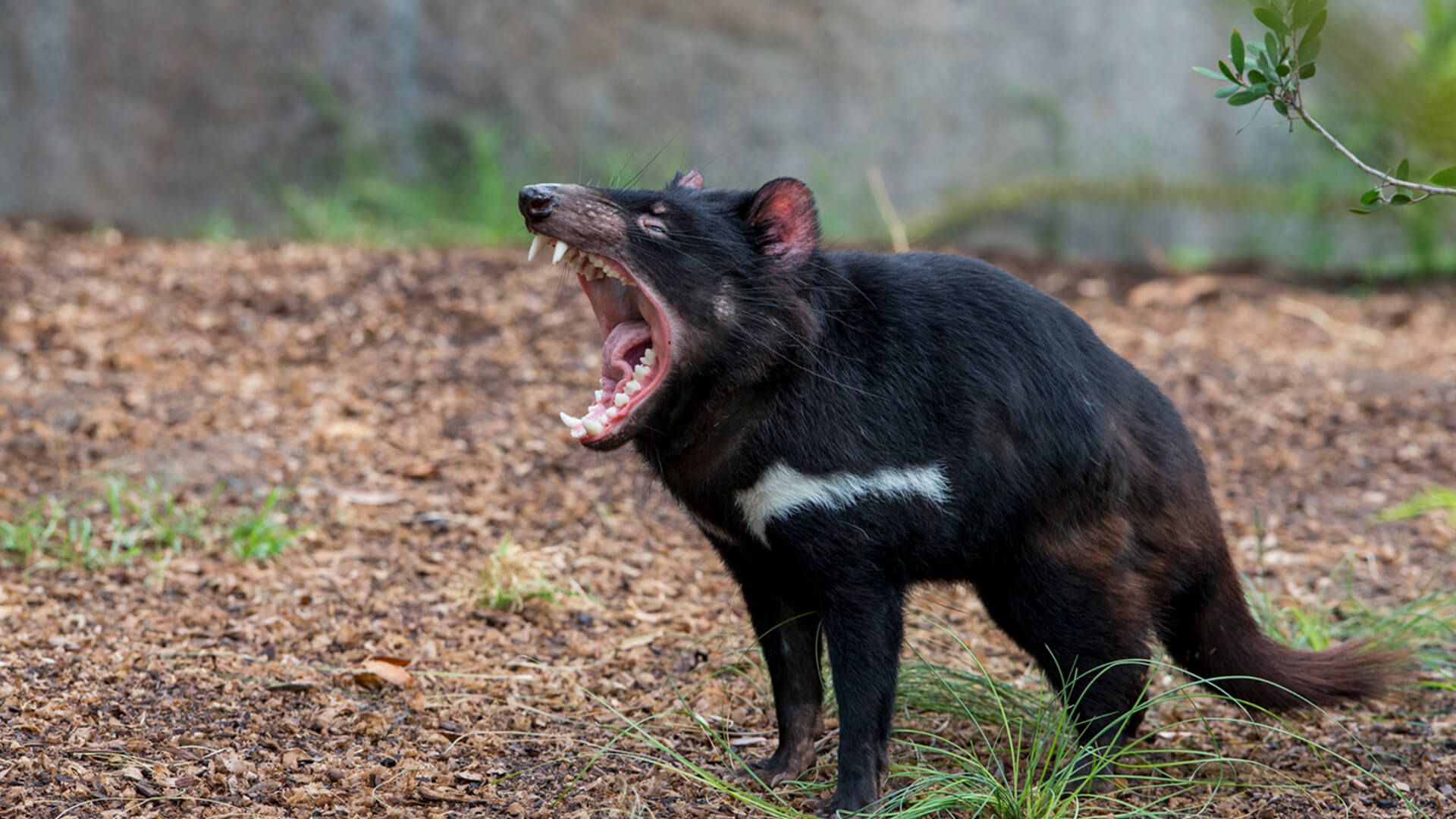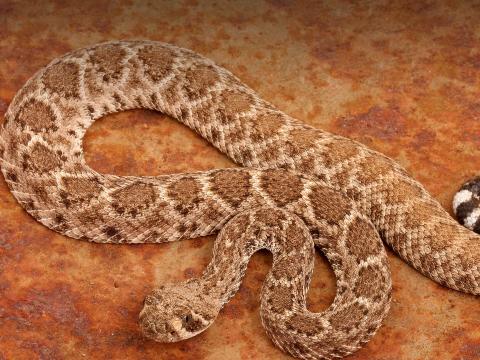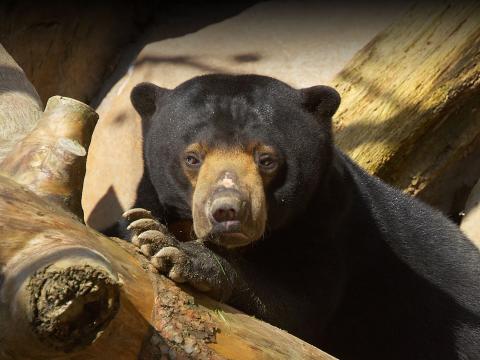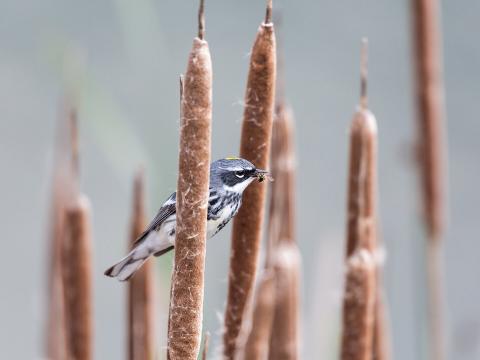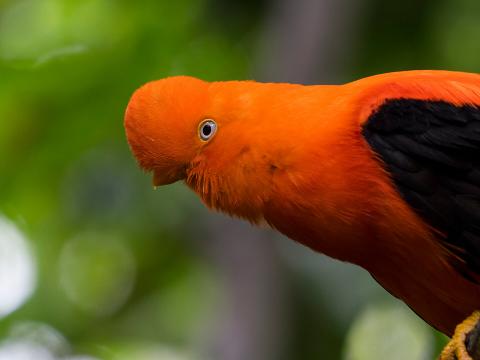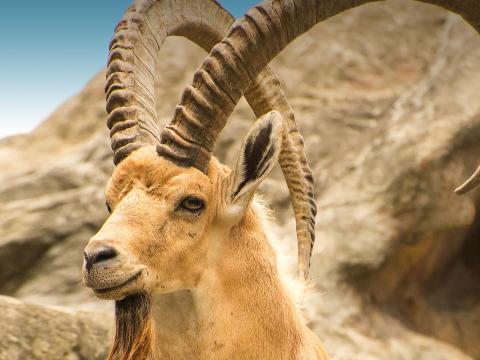Tasmanian Devil
- CLASS: Mammalia (Mammals)
- ORDER: Dasyuromorphia
- FAMILY: Dasyuridae
- GENUS: Sarcophilus
- SPECIES: harrisii
ABOUT
Tasmanian devils are as intriguing as they are unique. These marsupials are only found on the island state of Tasmania, a part of Australia. Why the “fiery” name and reputation for something the size of a small dog? Tasmanian devils use spirited behaviors to communicate and thrive. They make eerie growls while searching for food at night. Their oversized head, neck, and jaws are well suited to crushing bones. And when a group of devils feeds together at a carcass, loud screeching and spine-chilling screams can be heard. These actions may seem unusual to us, but they have a different meaning in devil society:
A mouth that opens quite wide—While the famous gape, or yawn, of the Tasmanian devil looks threatening, it is more likely to express fear and uncertainty than aggression.
A foul odor—This is produced under stress, not when the devil is calm and relaxed.
Fierce snarls and high-pitched screams—These are used to establish dominance at feeding time around a carcass.
A strong sneeze—No, they aren’t catching a cold! Instead, the sneeze may come before a fight between devils. These are mostly spectacular bluff behaviors, all part of a ritual to lessen any real fighting that may lead to serious injuries. After a nose-to-nose confrontation—during which their ears flush red!—one or both usually back down.
HABITAT AND DIET
The Tasmanian's devil's range is the island state of Tasmania, which is part of Australia. Their habitat includes eucalyptus forests, woodlands, coastal scrubland, and agricultural areas.
During the day, Tasmanian devils find shelter under stones, in caves, bushes, old wombat burrows, or hollow logs. With their stocky body and large head, devils look slow and awkward in their movements as they amble along, but they are the top carnivores in Tasmania. Tasmanian devils maintain home ranges, which vary with the availability of food.
Curious and energetic, Tasmanian devils travel long distances each night in their pursuit of food, sometimes covering as much as 10 miles (16 kilometers). They use their keen senses of smell and hearing to find prey or carrion. As carnivorous marsupials, Tasmanian devils are basically carrion eaters, scavenging anything that comes their way. But they also hunt live prey such as small mammals and birds. Because of their tearing, shearing teeth and powerful jaws, devils can eat most of a carcass, including the bones.
And while they are solitary by nature, they often come together to feed on carcasses—which is where most of the growling and screeching takes place! As gorge feeders, they consume large amounts of food at a time. As scavengers, devils also help their habitat by eating most anything lying around, no matter how old or rotten.
FAMILY LIFE
The mother devil gives birth to her tiny, undeveloped babies, called imps, which are pink and hairless, and remain in her pouch for close to four months. Amazingly enough, 20–40 can be born in one litter! The imps must race a distance of about 3 inches (7.6 centimeters) from the birth canal to the mother’s rear-facing pouch, using their well-developed claws, where they compete to attach themselves to one of only four available teats. Only those four will then have a chance to grow and survive. The imps cannot relax their hold on a teat until they are about 100 days old and are often dragged along underneath their mother as she travels while still attached to her nipples.
When they emerge from the pouch, the imps often ride on their mother’s back, like young koalas, or stay in the den while she hunts. After about six months old, the young are weaned, becoming independent at around nine months.
Young devils are more agile than adults and can climb trees. If they can survive their first year, a devil’s life span in native habitats is about seven to eight years.
CONSERVATION
When Europeans came to Tasmania in the late 18th century, they considered Tasmanian devils to be pests because this native species hunted the settlers’ sheep and chickens. By the 1830s, bounties were placed on the devils until they had neared extinction by the turn of the century. Devils gained legal protection in 1941, giving the population a chance to gradually increase.
Today, Tasmanian devils are still endangered. We're collaborating with partners across Australia and Tasmania to help secure the future for them through our Australian Forest Conservation Hub.
Sometimes residents of Tasmania still think of devils as pests, but this is because their numbers increase each summer when the young leave their mother to live on their own. However, only about 40 percent of these survive the first few months because of competition for food, so the dramatic increase in number happens only once a year. Most farmers now appreciate devils for their ability to keep down rodent populations, which eat crops.
Threats to Tasmanian devils include attacks by domestic dogs and foxes, being hit by cars, loss of habitat, and disease. The largest predator in the devil's ecosystem is the Tasmanian wedge-tailed eagle, which competes for food with scavenging devils.
Devils also face a new challenge: disease. Devil facial tumor disease, a rare, contagious cancer found only in devils, has been killing adult devils in recent years. Detected in 1996, the disease is transmitted from one individual to another through biting, a common behavior among devils when mating and feeding. It kills all infected devils within 6 to 12 months, and there is no known cure or vaccine.
Despite their early reputation, it’s clear that Tasmanian devils have made their mark on the island. They were even chosen as the symbol of the Tasmanian National Parks and Wildlife Service.
By supporting San Diego Zoo Wildlife Alliance, you are our ally in saving and protecting wildlife worldwide.

